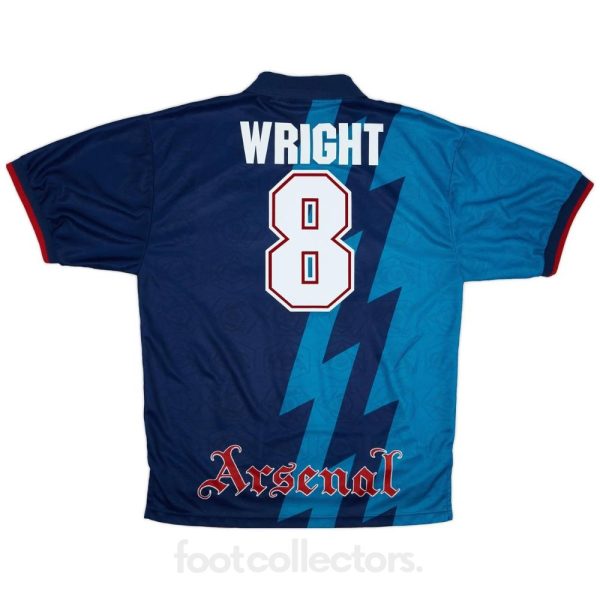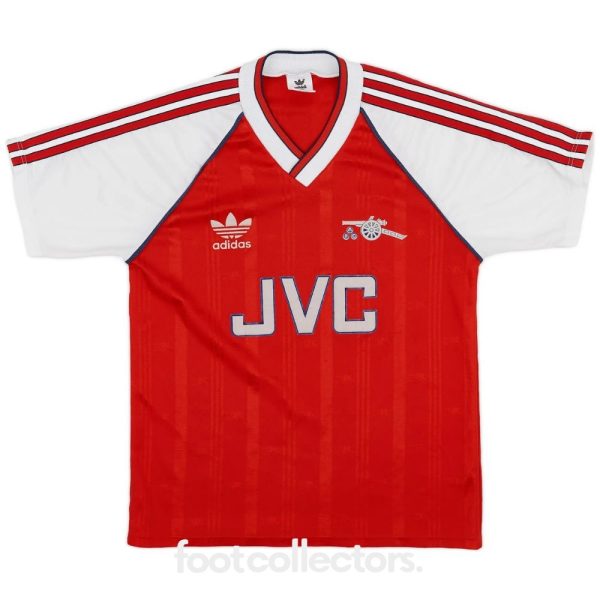A game played in colder weather requires special gear to remain in good shape, stay flexible, and to avoid injury. As temperatures drop and the weather gets colder, layering with the right apparel can make a huge difference in performance and focus. The ability to layer effectively by selecting the proper fabrics, and then add the appropriate accessories is essential for athletes who must battle the cold. This guide will add the most important tips to keep warm on the field. It also highlights classic gear options like the Kit Arsenal Retro, Jersey Arsenal Retro, and the Shirt Arsenal Retro, which are a blend of iconic style and practical warmth.

Essential Cold-Weather Apparel for Football Players
When it comes time to play cold-weather football, layering and selecting the right material is vital to staying warm and not feeling cramped. Here are the essential items that every footballer needs to perform at their best when temperatures drop.
1. Base Layers: The Foundation of Warmth
The base layer is the very first line of defense against cold, and it is essential in regulating body temperature. Choose lightweight, moisture-wicking base layers that keep sweat from the skin. This is crucial to stay dry, since dampness could cause rapid heat loss.
Leggings and compression tops are popular options for base layers due to their being comfortable, supple, and help maintain warmth. Many brands have thermal options specifically designed for colder conditions. To pay homage to the Arsenal's past, combining your base layer with Arsenal Retro kit. Arsenal Retro can keep players warm, while displaying the club's heritage.

2. Long-Sleeve Jerseys and Insulating Layers
After putting on the base layer players must wear an insulating layer that traps the heat. In cold weather, long sleeves deliver more warmth and coverage with the ability to move. For chilly weather, the Jersey Arsenal Retro is a superb choice with the iconic red colour and white sleeves with modern technology for fabric. Influenced by Arsenal kits of the past, this vintage jersey has both practicality and style, keeping players warm and encouraging team pride.
For colder days, consider a fleece-lined long-sleeve t-shirt or a top with a quarter zip. These mid-layers can be layered to add warmth without the bulk, which makes it easier to move about freely. Opt for breathable yet insulating fabrics, like wool-blend or polyester, that allow body heat to remain without the loss of airflow.

3. Training Jackets and Outer Layers
This outer layer can be especially essential for warm-ups and training that provide an more protection against wind and cold. A well-constructed training jacket needs to be light, water-resistant and windproof, to protect you from the elements. Look for jackets with zip-up pockets and adjustable hoods, which can help shield against gusts of wind.
The shirt Arsenal Retro Jersey Arsenal Retro data->also makes an excellent outer layer as it is a tribute to the club's classic designs while providing flexibility and insulation. When it comes to practice or game day the shirt works well over a mid-layer and base layer and offers just the right amount of warmth to play outdoors.
4. Thermal Shorts and Tights
The ability to keep your legs warm is vital to avoid muscle tightness and injuries. Thermal tights or thermal shorts are perfect for insulating the muscles of your legs and keeping joints flexible. They can be layered over regular shorts or workout pants and serve a layer of warmth but not restricting movement.
While the Arsenal Retro Kit Arsenal Retro does not include tights, it's a great feature to pair together with thermal compression shorts, or long pant to create an elegant look that is reminiscent of Arsenal's legacy. The combination of retro-inspired gear and thermal tights offer practicality and style, assuring the players are comfortable and warm on the field.
5. Insulated Socks and Proper Footwear
The feet of your feet can be cold when temperatures are low, so insulated socks are essential for maintaining circulation and warmth. You should look for moisture-wicking as well as thermal socks made specifically for football or outdoor sports as they stop sweat accumulation and keep feet dry.
Cleats should fit comfortably without pushing the toes. If you are playing in cold weather, think about cleats that have a higher ankle collar for added warmth and stability. Covers for waterproofing or sprays for cleats may add protection against weather conditions that are wet, which keeps feet dry and warm during the game.
6. Gloves and Hand Warmers
Cold hands can be painful, which is why buying good football gloves is worthwhile. These gloves must be flexible and have a comfortable material on the palms that allow players to move the ball with ease without losing control.
Some players also keep small hand warmers in their gloves or pockets to give them an additional boost of warmth during breaks. It can aid in maintaining circulation and reduce stiffness in the fingers, especially during extremely cold conditions.
7. Hats, Headbands, and Neck Warmers
It's easy to lose heat through the head and neck Therefore, keeping these places warm is essential for winter play. A slouchy, moisture-wicking hat or headband helps retain warmth without feeling heavy. To protect your neck Neck warmers and "snoods" cover the neck and lower face. They provide insulation without obstructing breathing.
8. Layered Shorts and Pants
In cold weather the idea of layering tights over shorts or wearing tracksuits with insulation can help keep the muscles of your legs warm. The idea of layering shorts with thermal tights is a popular choice among footballers because it provides an additional layer without limiting movement. Track pant or training pants with thermal linings are also a excellent choice for keeping warm.
The Charm of Retro Football Kits in Cold Weather
Vintage football uniforms have been popular in recent times, mixing